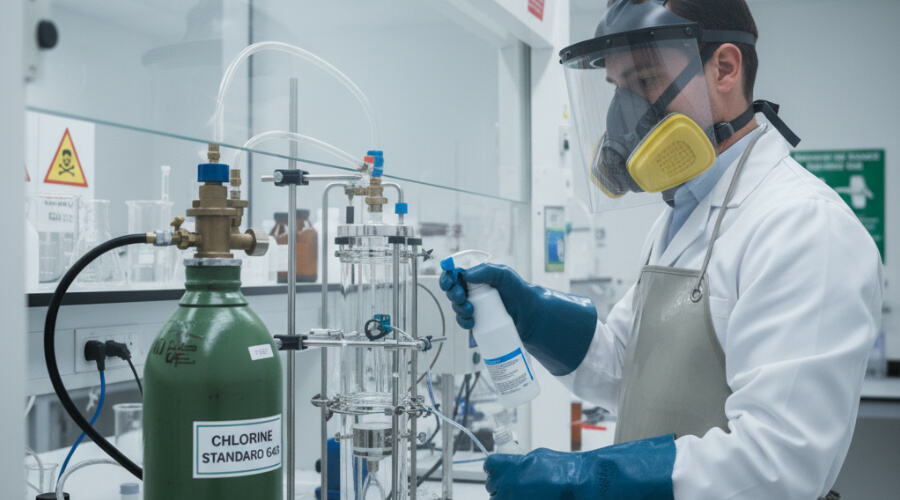Chlorine (Cl₂) is a highly toxic, strongly oxidizing, and corrosive gas. It is extremely irritating to the eyes and respiratory tract, and high concentrations can be life-threatening to personnel. In industrial settings where chlorine may be present, gas analyzers must be installed in worker operating areas with appropriate alarm thresholds to ensure that chlorine leak detection alarms function properly. Additionally, portable chlorine detectors should be used for real-time monitoring during operations.
When using Cl₂ to test certain sensors, corrosion-resistant materials must be employed in the testing system. It is recommended to use polytetrafluoroethylene (PTFE) or electropolished stainless steel. Before testing with Cl₂ calibration gas, the gas lines should be conditioned by purging with the gas for a period of time. Specifically, after connecting the system, open the cylinder valve slightly to allow a small amount of gas to flow through the system and be vented into a fume hood (never release it directly into the laboratory air!). It is essential to thoroughly purge the pipelines and instruments to remove air and residual moisture. Sufficient purging time must be allowed to ensure that the gas concentration inside the system matches that of the calibration gas. Otherwise, the initial low concentration of Cl₂ may cause an excessively slow sensor response. Excessive flow rates may also damage the sensor or lead to inaccurate measurements. Based on multiple tests, we recommend using a standard 10 ppm Cl₂ calibration gas, with a 20 cm tubing length, and purging at a flow rate of 0.5 L/min for 8–9 minutes before introducing the gas to the sensors for testing. This ensures reliable and accurate test results.
After testing, first close the cylinder valve. Then, allow the system to continue operating to exhaust any remaining calibration gas from the pipelines. Finally, release the pressure adjustment knob on the regulator, shut down the instrument, and depressurize the lines. Ensure that chlorine calibration gas cylinders are stored in a cool, dry, well-ventilated dedicated hazardous material gas cabinet, away from heat sources, open flames, and flammable materials. They must be stored separately from combustible gases, hydrogen, ammonia, etc. (mixing chlorine and ammonia can produce explosive ammonium chloride fumes). The storage area should not contain metal equipment susceptible to corrosion.

 Hot News
Hot News2025-10-29
2025-10-22
2025-10-28
2025-10-28
2025-10-28
2025-09-15